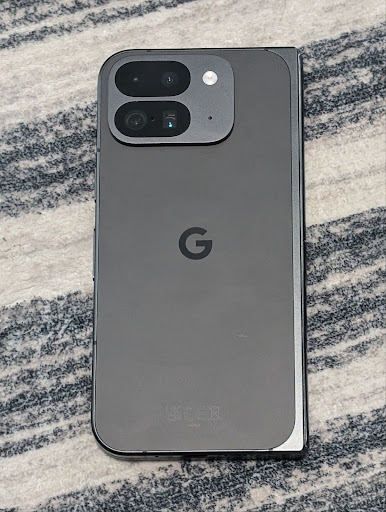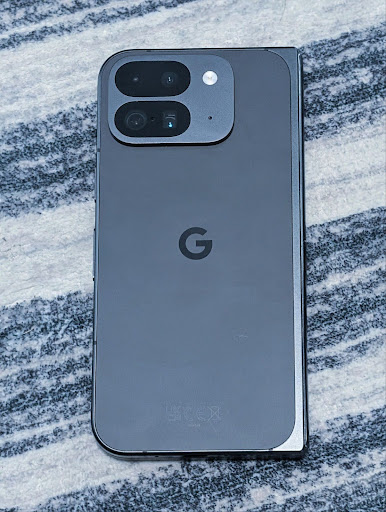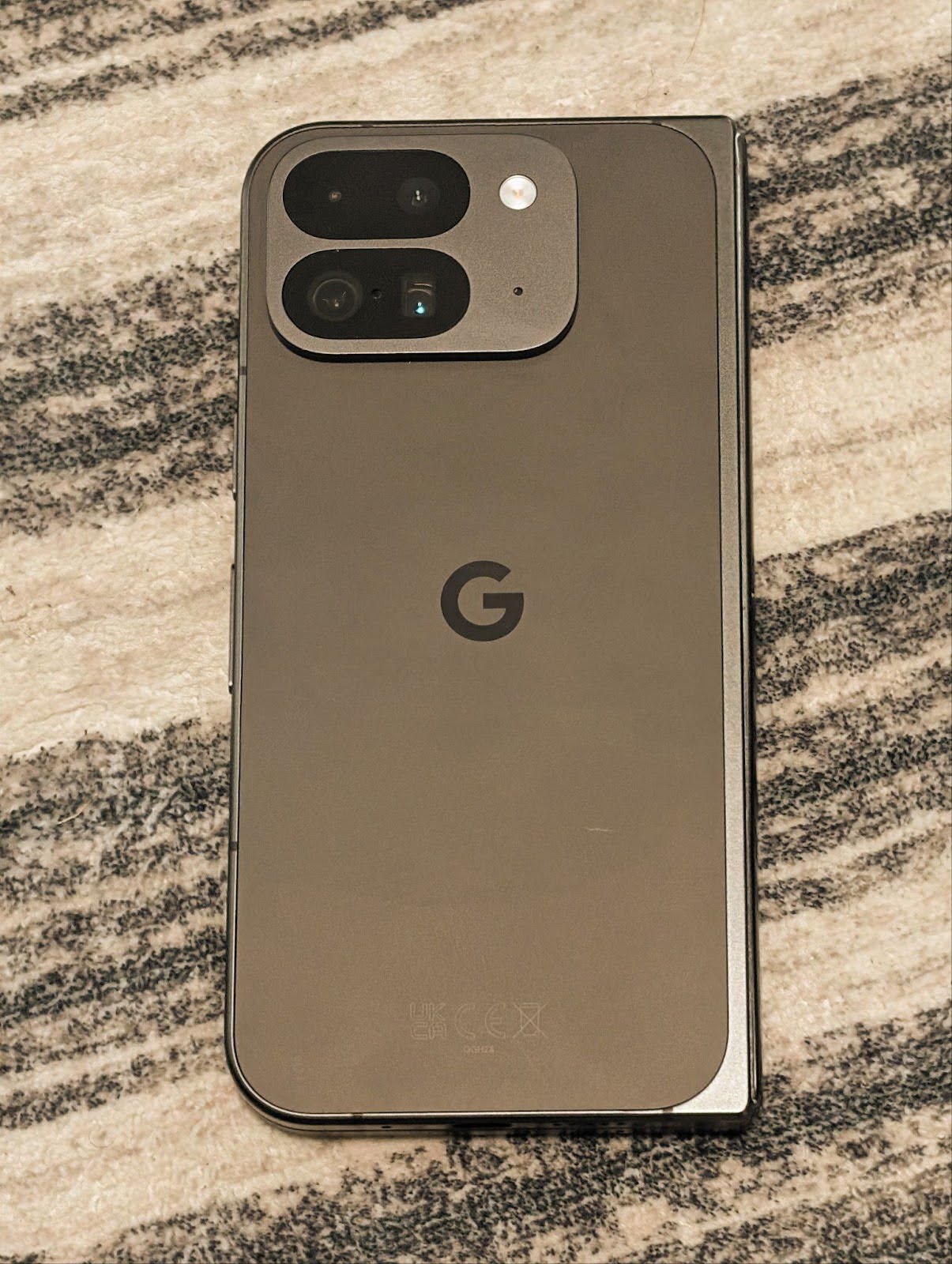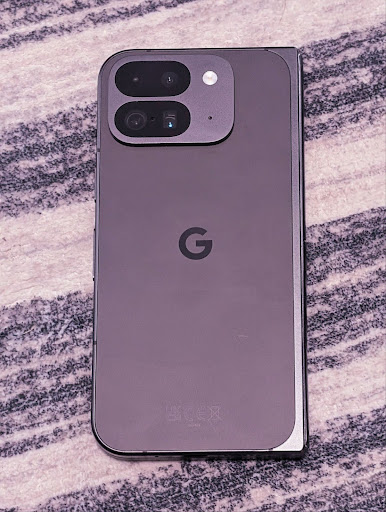Android 16 wprowadza nowe, świetne funkcje i interfejsy API dla deweloperów. W następnych sekcjach omówimy te funkcje, aby ułatwić Ci rozpoczęcie korzystania z powiązanych interfejsów API.
Szczegółową listę nowych, zmodyfikowanych i usuniętych interfejsów API znajdziesz w raporcie porównawczym interfejsów API. Szczegółowe informacje o nowych interfejsach API znajdziesz w dokumentacji interfejsu API Androida. Nowe interfejsy API są wyróżnione.Sprawdź też, w jakich obszarach zmiany na platformie mogą mieć wpływ na Twoje aplikacje. Więcej informacji znajdziesz na tych stronach:
- Zmiany zachowania, które wpływają na aplikacje kierowane na Androida 16
- Zmiany zachowania, które wpływają na wszystkie aplikacje niezależnie od
targetSdkVersion.
Główna funkcja
Android zawiera nowe interfejsy API, które rozszerzają podstawowe możliwości systemu.
2 wersje interfejsu Android API w 2025 r.
- This preview is for the next major release of Android with a planned launch in Q2 of 2025. This release is similar to all of our API releases in the past, where we can have planned behavior changes that are often tied to a targetSdkVersion.
- We're planning the major release a quarter earlier (Q2 rather than Q3 in prior years) to better align with the schedule of device launches across our ecosystem, so more devices can get the major release of Android sooner. With the major release coming in Q2, you'll need to do your annual compatibility testing a few months earlier than in previous years to make sure your apps are ready.
- We plan to have another release in Q4 of 2025 which also will include new developer APIs. The Q2 major release will be the only release in 2025 to include planned behavior changes that could affect apps.
In addition to new developer APIs, the Q4 minor release will pick up feature updates, optimizations, and bug fixes; it will not include any app-impacting behavior changes.

We'll continue to have quarterly Android releases. The Q1 and Q3 updates in-between the API releases will provide incremental updates to help ensure continuous quality. We're actively working with our device partners to bring the Q2 release to as many devices as possible.
Using new APIs with major and minor releases
Guarding a code block with a check for API level is done today using
the SDK_INT constant with
VERSION_CODES. This will continue
to be supported for major Android releases.
if (SDK_INT >= VERSION_CODES.BAKLAVA) {
// Use APIs introduced in Android 16
}
The new SDK_INT_FULL
constant can be used for API checks against both major and minor versions with
the new VERSION_CODES_FULL
enumeration.
if (SDK_INT_FULL >= VERSION_CODES_FULL.[MAJOR or MINOR RELEASE]) {
// Use APIs introduced in a major or minor release
}
You can also use the
Build.getMinorSdkVersion()
method to get just the minor SDK version.
val minorSdkVersion = Build.getMinorSdkVersion(VERSION_CODES_FULL.BAKLAVA)
These APIs have not yet been finalized and are subject to change, so please send us feedback if you have any concerns.
Wrażenia użytkownika i interfejs systemu
Android 16 daje deweloperom i użytkownikom aplikacji większą kontrolę oraz elastyczność w konfigurowaniu urządzenia zgodnie z ich potrzebami.
Powiadomienia o postępie
Android 16 introduces progress-centric notifications to help users seamlessly track user-initiated, start-to-end journeys.
Notification.ProgressStyle is a new notification
style that lets you create progress-centric notifications. Key use cases include
rideshare, delivery, and navigation. Within the Notification.ProgressStyle
class, you can denote states and milestones in a user journey using
points and segments.
To learn more, see the Progress-centric notifications documentation page.


Aktualizacje przewidywanego przejścia wstecz
Android 16 adds new APIs to help you enable predictive back system animations in
gesture navigation such as the back-to-home animation. Registering the
onBackInvokedCallback with the new
PRIORITY_SYSTEM_NAVIGATION_OBSERVER allows your app to
receive the regular onBackInvoked call whenever the
system handles a back navigation without impacting the normal back navigation
flow.
Android 16 additionally adds the
finishAndRemoveTaskCallback() and
moveTaskToBackCallback. By registering these callbacks
with the OnBackInvokedDispatcher, the system can trigger
specific behaviors and play corresponding ahead-of-time animations when the back
gesture is invoked.
Bardziej rozbudowane reakcje haptyczne
Android has exposed control over the haptic actuator ever since its inception.
Android 11 added support for more complex haptic effects that more advanced
actuators could support through
VibrationEffect.Compositions of device-defined semantic
primitives.
Android 16 adds haptic APIs that let apps define the amplitude and frequency curves of a haptic effect while abstracting away differences between device capabilities.
Narzędzia i produktywność programistów
Chociaż większość naszych działań na rzecz zwiększenia produktywności skupia się na takich narzędziach jak Android Studio, Jetpack Compose i biblioteki Jetpacka na Androida, zawsze szukamy sposobów na to, aby platforma pomagała Ci w realizowaniu Twoich pomysłów.
Zarządzanie treściami w animowanych tapetach
In Android 16, the live wallpaper framework is gaining a new content API to
address the challenges of dynamic, user-driven wallpapers. Currently, live
wallpapers incorporating user-provided content require complex, service-specific
implementations. Android 16 introduces
WallpaperDescription and
WallpaperInstance. WallpaperDescription lets you
identify distinct instances of a live wallpaper from the same service. For
example, a wallpaper that has instances on both the home screen and on the lock
screen may have unique content in both places. The wallpaper picker and
WallpaperManager use this metadata to better present
wallpapers to users, streamlining the process for you to create diverse and
personalized live wallpaper experiences.
Wydajność i bateria
Android 16 wprowadza interfejsy API, które ułatwiają zbieranie statystyk dotyczących aplikacji.
Profilowanie wywoływane przez system
ProfilingManager was
added in Android 15, giving apps the ability to
request profiling data collection using Perfetto on public devices in the field.
However, since this profiling must be started from the app, critical flows such
as startups or ANRs would be difficult or impossible for apps to capture.
To help with this, Android 16 introduces system-triggered profiling to
ProfilingManager. Apps can register interest in receiving traces for certain
triggers such as cold start reportFullyDrawn
or ANRs, and then the system starts and stops a trace on the app's behalf. After
the trace completes, the results are delivered to the app's data directory.
Uruchamianie komponentu w ApplicationStartInfo
ApplicationStartInfo was added in Android
15, allowing an app to see reasons
for process start, start type, start times, throttling, and other useful
diagnostic data. Android 16 adds
getStartComponent()
to distinguish what component type triggered the start, which can be helpful for
optimizing the startup flow of your app.
Lepsza analiza zadań
The JobScheduler#getPendingJobReason() API returns a reason why a job
might be pending. However, a job might be pending for multiple reasons.
In Android 16, we are introducing a new API
JobScheduler#getPendingJobReasons(int jobId), which returns multiple
reasons why a job is pending, due to both explicit constraints set by the
developer and implicit constraints set by the system.
We're also introducing
JobScheduler#getPendingJobReasonsHistory(int jobId), which returns a list
of the most recent constraint changes.
We recommend using the API to help you debug why your jobs may not be executing, especially if you're seeing reduced success rates of certain tasks or have bugs around latency of certain job completion. For example, updating widgets in the background failed to occur or prefetch job failed to be called prior to app start.
This can also better help you understand if certain jobs are not completing due to system defined constraints versus explicitly set constraints.
adaptacyjna częstotliwość odświeżania,
Adaptive refresh rate (ARR), introduced in Android 15, enables the display refresh rate on supported hardware to adapt to the content frame rate using discrete VSync steps. This reduces power consumption while eliminating the need for potentially jank-inducing mode-switching.
Android 16 introduces hasArrSupport() and
getSuggestedFrameRate(int) while restoring
getSupportedRefreshRates() to make it easier for your apps to take
advantage of ARR. RecyclerView
1.4 internally supports ARR when it is settling from a fling or
smooth scroll, and we're continuing our work to add ARR
support into more Jetpack libraries. This frame rate article covers
many of the APIs you can use to set the frame rate so that your app can directly
use ARR.
Interfejsy Headroom w ADPF
The SystemHealthManager introduces the
getCpuHeadroom and
getGpuHeadroom APIs, designed to provide games and
resource-intensive apps with estimates of available CPU and GPU resources. These
methods offer a way for you to gauge how your app or game can best improve
system health, particularly when used in conjunction with other Android Dynamic
Performance Framework (ADPF) APIs that detect thermal
throttling.
By using CpuHeadroomParams and
GpuHeadroomParams on supported devices, you can
customize the time window used to compute the headroom and select between
average or minimum resource availability. This can help you reduce your CPU or
GPU resource usage accordingly, leading to better user experiences and improved
battery life.
Ułatwienia dostępu
Android 16 zawiera nowe interfejsy API i funkcje ułatwień dostępu, które ułatwiają udostępnianie aplikacji wszystkim użytkownikom.
Ulepszone interfejsy API ułatwień dostępu
Android 16 adds additional APIs to enhance UI semantics that help improve consistency for users that rely on accessibility services, such as TalkBack.
Outline text for maximum text contrast
Users with low vision often have reduced contrast sensitivity, making it challenging to distinguish objects from their backgrounds. To help these users, Android 16 introduces outline text, replacing high contrast text, which draws a larger contrasting area around text to greatly improve legibility.
Android 16 contains new AccessibilityManager APIs to let
your apps check or register a listener to
see if this mode is enabled. This is primarily for UI Toolkits like Compose to
offer a similar visual experience. If you maintain a UI Toolkit library or your
app performs custom text rendering that bypasses the
android.text.Layout class then you can use this to know
when outline text is enabled.

Duration added to TtsSpan
Android 16 extends TtsSpan with a TYPE_DURATION,
consisting of ARG_HOURS, ARG_MINUTES,
and ARG_SECONDS. This lets you directly annotate time
duration, ensuring accurate and consistent text-to-speech output with services
like TalkBack.
Support elements with multiple labels
Android currently allows UI elements to derive their accessibility label from
another, and now offers the ability for multiple labels to be associated, a
common scenario in web content. By introducing a list-based API within
AccessibilityNodeInfo, Android can directly support these
multi-label relationships. As part of this change, we've deprecated
AccessibilityNodeInfo#setLabeledBy and
#getLabeledBy in favor of
#addLabeledBy, #removeLabeledBy, and
#getLabeledByList.
Improved support for expandable elements
Android 16 adds accessibility APIs that allow you to convey the expanded or
collapsed state of interactive elements, such as menus and expandable lists. By
setting the expanded state using setExpandedState and
dispatching TYPE_WINDOW_CONTENT_CHANGED AccessibilityEvents
with a CONTENT_CHANGE_TYPE_EXPANDED content change type,
you can ensure that screen readers like TalkBack announce
state changes, providing a more intuitive and inclusive user experience.
Indeterminate ProgressBars
Android 16 adds RANGE_TYPE_INDETERMINATE, giving a way for
you to expose RangeInfo for both determinate and
indeterminate ProgressBar widgets, allowing services like
TalkBack to more consistently provide feedback for progress
indicators.
Tri-state CheckBox
The new AccessibilityNodeInfo
getChecked and setChecked(int)
methods in Android 16 now support a "partially checked" state in addition to
"checked" and "unchecked." This replaces the deprecated boolean
isChecked and setChecked(boolean).
Supplemental descriptions
When an accessibility service describes a ViewGroup, it
combines content labels from its child views. If you provide a
contentDescription for the ViewGroup, accessibility services assume you are
also overriding the description of non-focusable child views. This can be
problematic if you want to label things like a drop-down (for example, "Font
Family") while preserving the current selection for accessibility (for example,
"Roboto"). Android 16 adds setSupplementalDescription so
you can provide text that provides information about a ViewGroup without
overriding information from its children.
Required form fields
Android 16 adds setFieldRequired to
AccessibilityNodeInfo so apps can tell an accessibility
service that input to a form field is required. This is an important scenario
for users filling out many types of forms, even things as simple as a required
terms and conditions checkbox, helping users to consistently identify and
quickly navigate between required fields.
Telefon jako mikrofon do połączeń głosowych z aparatami słuchowymi LEA
Android 16 adds the capability for users of LE Audio hearing aids to switch between the built-in microphones on the hearing aids and the microphone on their phone for voice calls. This can be helpful in noisy environments or other situations where the hearing aid's microphones might not perform well.
Sterowanie głośnością dźwięków otoczenia w aparatach słuchowych LEA
Android 16 umożliwia użytkownikom aparatów słuchowych LE Audio dostosowywanie głośności dźwięku otoczenia, który jest odbierany przez mikrofony aparatu. Może to być przydatne w sytuacjach, gdy szum w tle jest zbyt głośny lub zbyt cichy.
Aparat
Android 16 zapewnia lepszą obsługę profesjonalnych aparatów, umożliwiając hybrydalną automatyczną ekspozycję oraz dokładne dostosowanie temperatury i odsłonięcia kolorów. Nowy wskaźnik trybu nocnego pomaga aplikacji określić, kiedy włączyć i wyłączyć tryb nocny kamery. Nowe działania Intent ułatwiają robienie zdjęć w ruchu. Nadal ulepszamy zdjęcia w technologii Ultra HDR, dodając obsługę kodowania HEIC i nowe parametry z projektu standardu ISO 21496-1.
Hybrydowa automatyczna ekspozycja
Android 16 adds new hybrid auto-exposure modes to Camera2, allowing you to manually control specific aspects of exposure while letting the auto-exposure (AE) algorithm handle the rest. You can control ISO + AE, and exposure time + AE, providing greater flexibility compared to the current approach where you either have full manual control or rely entirely on auto-exposure.
fun setISOPriority() {
// ... (Your existing code before the snippet) ...
val availablePriorityModes = mStaticInfo.characteristics.get(
CameraCharacteristics.CONTROL_AE_AVAILABLE_PRIORITY_MODES
)
// ... (Your existing code between the snippets) ...
// Turn on AE mode to set priority mode
reqBuilder.set(
CaptureRequest.CONTROL_AE_MODE,
CameraMetadata.CONTROL_AE_MODE_ON
)
reqBuilder.set(
CaptureRequest.CONTROL_AE_PRIORITY_MODE,
CameraMetadata.CONTROL_AE_PRIORITY_MODE_SENSOR_SENSITIVITY_PRIORITY
)
reqBuilder.set(
CaptureRequest.SENSOR_SENSITIVITY,
TEST_SENSITIVITY_VALUE
)
val request: CaptureRequest = reqBuilder.build()
// ... (Your existing code after the snippet) ...
}
precyzyjne dostosowanie temperatury kolorów i odcienia;
Android 16 obsługuje kamery, które umożliwiają dokładne dostosowanie temperatury barw i odcieku, aby lepiej obsługiwać profesjonalne aplikacje do nagrywania filmów. W poprzednich wersjach Androida można było kontrolować ustawienia balansu bieli za pomocą CONTROL_AWB_MODE, które zawiera opcje ograniczone do listy wstępnie ustawionych wartości, takich jak żarówka, chmury i zmierzch. Opcja COLOR_CORRECTION_MODE_CCT umożliwia użycie COLOR_CORRECTION_COLOR_TEMPERATURE i COLOR_CORRECTION_COLOR_TINT do precyzyjnego dostosowania balansu bieli na podstawie skorelowanej temperatury barwowej.
public void setCCT() {
...
Range<Integer> colorTemperatureRange =
mStaticInfo.getCharacteristics().get(CameraCharacteristics.
COLOR_CORRECTION_COLOR_TEMPERATURE_RANGE);
// Set to manual mode to enable CCT mode
reqBuilder.set(CaptureRequest.CONTROL_AWB_MODE, CameraMetadata.CONTROL_AWB_MODE_OFF);
reqBuilder.set(CaptureRequest.COLOR_CORRECTION_MODE,
CameraMetadata.COLOR_CORRECTION_MODE_CCT);
reqBuilder.set(CaptureRequest.COLOR_CORRECTION_COLOR_TEMPERATURE, 5000);
reqBuilder.set(CaptureRequest.COLOR_CORRECTION_COLOR_TINT, 30);
CaptureRequest request = reqBuilder.build();
...
}
Poniższe przykłady pokazują, jak zdjęcie będzie wyglądać po zastosowaniu różnych ustawień temperatury barw i odcienia:





Wykrywanie sceny w trybie nocnym aparatu
To help your app know when to switch to and from a night mode camera session,
Android 16 adds EXTENSION_NIGHT_MODE_INDICATOR. If
supported, it's available in the CaptureResult within
Camera2.
This is the API we briefly mentioned as coming soon in the How Instagram enabled users to take stunning low light photos blog post. That post is a practical guide on how to implement night mode together with a case study that links higher-quality in-app night mode photos with an increase in the number of photos shared from the in-app camera.
Działania intencji przechwytywania zdjęć ruchomych
Android 16 adds standard Intent actions —
ACTION_MOTION_PHOTO_CAPTURE, and
ACTION_MOTION_PHOTO_CAPTURE_SECURE — which request that
the camera application capture a motion photo and return
it.
You must either pass an extra EXTRA_OUTPUT to control
where the image will be written, or a Uri through
Intent.setClipData(ClipData). If you don't set a
ClipData, it will be copied there for you when calling
Context.startActivity(Intent).
Ulepszenia obrazu w trybie UltraHDR

Android 16 continues our work to deliver dazzling image quality with UltraHDR
images. It adds support for UltraHDR images in the HEIC file
format. These images will get ImageFormat type
HEIC_ULTRAHDR and will contain an embedded gainmap similar
to the existing UltraHDR JPEG format. We're working on AVIF support for UltraHDR
as well, so stay tuned.
In addition, Android 16 implements additional parameters in UltraHDR from the ISO 21496-1 draft standard, including the ability to get and set the colorspace that gainmap math should be applied in, as well as support for HDR encoded base images with SDR gainmaps.
Grafika
Android 16 zawiera najnowsze ulepszenia grafiki, takie jak niestandardowe efekty graficzne z AGSL.
Efekty graficzne za pomocą AGSL
Android 16 adds RuntimeColorFilter and
RuntimeXfermode, allowing you to author complex effects like
Threshold, Sepia, and Hue Saturation and apply them to draw calls. Since Android
13, you've been able to use AGSL to create custom
RuntimeShaders that extend Shader. The new API
mirrors this, adding an AGSL-powered RuntimeColorFilter that
extends ColorFilter, and a Xfermode effect that
lets you implement AGSL-based custom compositing and blending between source and
destination pixels.
private val thresholdEffectString = """
uniform half threshold;
half4 main(half4 c) {
half luminosity = dot(c.rgb, half3(0.2126, 0.7152, 0.0722));
half bw = step(threshold, luminosity);
return bw.xxx1 * c.a;
}"""
fun setCustomColorFilter(paint: Paint) {
val filter = RuntimeColorFilter(thresholdEffectString)
filter.setFloatUniform(0.5);
paint.colorFilter = filter
}
Łączność
Android 16 aktualizuje platformę, aby zapewnić Twojej aplikacji dostęp do najnowszych osiągnięć w zakresie komunikacji i technologii bezprzewodowych.
Określanie położenia z zwiększonym bezpieczeństwem
Android 16 dodaje obsługę solidnych funkcji zabezpieczeń w lokalizacji Wi-Fi na obsługiwanych urządzeniach z użyciem standardu 802.11az Wi-Fi 6, co pozwala aplikacjom łączyć większą dokładność, większą skalowalność i dynamiczne harmonogramowanie protokołu z ulepszeniami zabezpieczeń, w tym szyfrowaniem AES-256 i ochroną przed atakami MITM. Umożliwia to bezpieczniejsze korzystanie z urządzenia w przypadku zastosowań związanych z użyciem w pobliżu, takich jak odblokowywanie laptopa czy drzwi samochodu. 802.11az jest zintegrowany ze standardem Wi-Fi 6, wykorzystując jego infrastrukturę i możliwości do szerszego wdrażania oraz łatwiejszego stosowania.
Ogólne interfejsy API do określania zasięgu
Android 16 includes the new RangingManager, which provides
ways to determine the distance and angle on supported hardware between the local
device and a remote device. RangingManager supports the usage of a variety of
ranging technologies such as BLE channel sounding, BLE RSSI-based ranging, Ultra
Wideband, and Wi-Fi round trip time.
Multimedia
Android 16 zawiera wiele funkcji, które ułatwiają korzystanie z multimediów.
Ulepszenia selektora zdjęć
Selektor zdjęć to bezpieczny, wbudowany sposób, dzięki któremu użytkownicy mogą przyznawać Twojej aplikacji dostęp do wybranych obrazów i filmów z magazynu lokalnego i chmury zamiast do całej biblioteki multimediów. Dzięki połączeniu modułów systemowych w ramach aktualizacji systemu od Google oraz Usług Google Play jest ona obsługiwana na urządzeniach z Androidem 4.4 (poziom interfejsu API 19) i starszych. Integracja wymaga tylko kilku linii kodu z powiązaną biblioteką Jetpacka na Androida.
Android 16 zawiera te ulepszenia selektora zdjęć:
- Umieszczony selektor zdjęć: nowe interfejsy API, które umożliwiają aplikacjom umieszczanie selektora zdjęć w hierarchii widoku. Dzięki temu użytkownik może mieć wrażenie, że jest to bardziej zintegrowana część aplikacji, a jednocześnie nadal korzystać z izolacji procesów, która pozwala użytkownikom wybierać media bez konieczności przyznawania aplikacji zbyt szerokich uprawnień. Aby zmaksymalizować zgodność z różnymi wersjami platform i uprościć integrację, jeśli chcesz zintegrować wbudowany selektor zdjęć, użyj nadchodzącej biblioteki Jetpacka na Androida.
- Wyszukiwanie w chmurze w selektorze zdjęć: nowe interfejsy API, które umożliwiają wyszukiwanie w chmurze u dostawcy multimediów w przypadku selektora zdjęć na Androida. Funkcja wyszukiwania w selektorze zdjęć będzie dostępna wkrótce.
Zaawansowane filmy profesjonalne
Android 16 introduces support for the Advanced Professional Video (APV) codec which is designed to be used for professional level high quality video recording and post production.
The APV codec standard has the following features:
- Perceptually lossless video quality (close to raw video quality)
- Low complexity and high throughput intra-frame-only coding (without pixel domain prediction) to better support editing workflows
- Support for high bit-rate range up to a few Gbps for 2K, 4K and 8K resolution content, enabled by a lightweight entropy coding scheme
- Frame tiling for immersive content and for enabling parallel encoding and decoding
- Support for various chroma sampling formats and bit-depths
- Support for multiple decoding and re-encoding without severe visual quality degradation
- Support multi-view video and auxiliary video like depth, alpha, and preview
- Support for HDR10/10+ and user-defined metadata
A reference implementation of APV is provided through the OpenAPV project. Android 16 will implement support for the APV 422-10 Profile that provides YUV 422 color sampling along with 10-bit encoding and for target bitrates of up to 2Gbps.
Prywatność
Android 16 zawiera wiele funkcji, które pomagają deweloperom aplikacji chronić prywatność użytkowników.
Aktualizacje Health Connect
W wersji Health Connect przeznaczonej dla deweloperów dodano ACTIVITY_INTENSITY, nowy typ danych zdefiniowany zgodnie z wytycznymi Światowej Organizacji Zdrowia dotyczącymi umiarkowanej i intensywnej aktywności. Każdy rekord wymaga podania godziny rozpoczęcia i zakończenia oraz określenia, czy intensywność aktywności jest umiarkowana czy intensywna.
Health Connect zawiera też zaktualizowane interfejsy API obsługujące dane o stanie zdrowia. Umożliwia to aplikacjom odczytywanie i zapisywanie danych medycznych w formacie FHIR za wyraźną zgodą użytkownika. Ten interfejs API jest w programie wcześniejszego dostępu. Jeśli chcesz wziąć udział w programie, zarejestruj się w programie wcześniejszego dostępu.
Piaskownica prywatności na Androida
Android 16 incorporates the latest version of the Privacy Sandbox on Android, part of our ongoing work to develop technologies where users know their privacy is protected. Our website has more about the Privacy Sandbox on Android developer beta program to help you get started. Check out the SDK Runtime which allows SDKs to run in a dedicated runtime environment separate from the app they are serving, providing stronger safeguards around user data collection and sharing.
Bezpieczeństwo
Android 16 zawiera funkcje, które pomagają zwiększyć bezpieczeństwo aplikacji i chronić jej dane.
Interfejs API udostępniania kluczy
Android 16 adds APIs that support sharing access to
Android Keystore keys with other apps. The new
KeyStoreManager class supports
granting and revoking access to keys
by app uid, and includes an API for apps to access shared
keys.
Formaty urządzeń
Android 16 zapewnia aplikacjom obsługę, która pozwala w pełni wykorzystać możliwości formatów Androida.
ujednolicony system jakości obrazu i dźwięku w telewizorach,
The new MediaQuality
package in Android 16 exposes
a set of standardized APIs for access to audio and picture profiles and
hardware-related settings. This allows streaming apps to query profiles and
apply them to media dynamically:
- Movies mastered with a wider dynamic range require greater color accuracy to see subtle details in shadows and adjust to ambient light, so a profile that prefers color accuracy over brightness may be appropriate.
- Live sporting events are often mastered with a narrow dynamic range, but are often watched in daylight, so a profile that preferences brightness over color accuracy can give better results.
- Fully interactive content wants minimal processing to reduce latency, and wants higher frame rates, which is why many TV's ship with a game profile.
The API allows apps to switch between profiles and users to enjoy tuning supported TVs to best suit their content.
Internacjonalizacja
Android 16 wprowadza funkcje i możliwości, które uzupełniają obsługę urządzenia w różnych językach.
Tekst pionowy
Android 16 adds low-level support for rendering and measuring text vertically to
provide foundational vertical writing support for library developers. This is
particularly useful for languages like Japanese that commonly use vertical
writing systems. A new flag,
VERTICAL_TEXT_FLAG,
has been added to the Paint class. When
this flag is set using
Paint.setFlags, Paint's
text measurement APIs will report vertical advances instead of horizontal
advances, and Canvas will draw text
vertically.
val text = "「春は、曙。」"
Box(
Modifier.padding(innerPadding).background(Color.White).fillMaxSize().drawWithContent {
drawIntoCanvas { canvas ->
val paint = Paint().apply { textSize = 64.sp.toPx() }
// Draw text vertically
paint.flags = paint.flags or VERTICAL_TEXT_FLAG
val height = paint.measureText(text)
canvas.nativeCanvas.drawText(
text,
0,
text.length,
size.width / 2,
(size.height - height) / 2,
paint
)
}
}
) {}
Dostosowywanie systemu pomiarowego
Users can now customize their measurement system in regional preferences within
Settings. The user preference is included as part of the locale code, so you can
register a BroadcastReceiver on
ACTION_LOCALE_CHANGED to handle locale configuration changes when
regional preferences change.
Using formatters can help match the local experience. For example, "0.5 in" in English (United States), is "12,7 mm" for a user who has set their phone to English (Denmark) or who uses their phone in English (United States) with the metric system as the measurement system preference.
To find these settings, open the Settings app and navigate to System > Languages & region.

